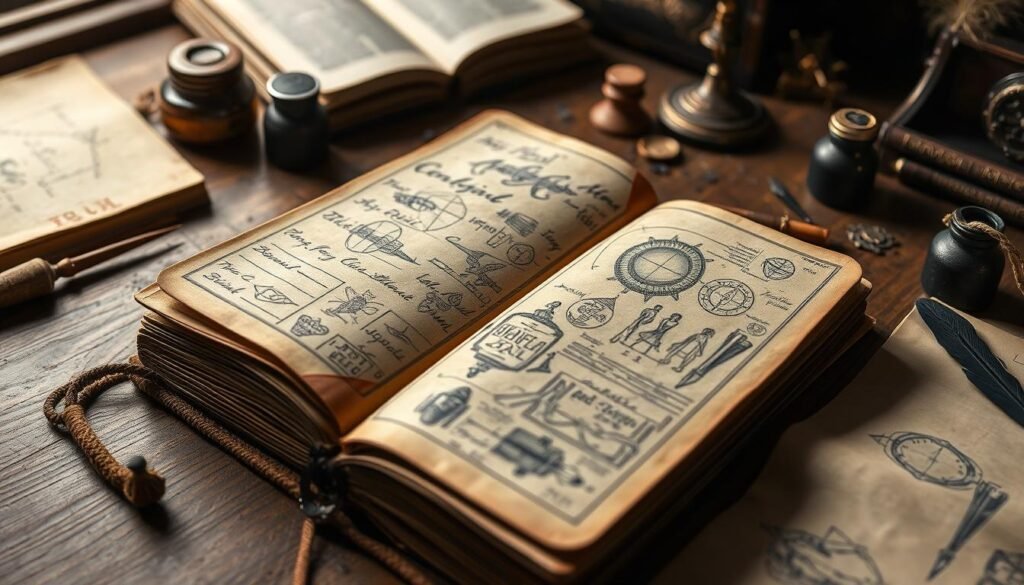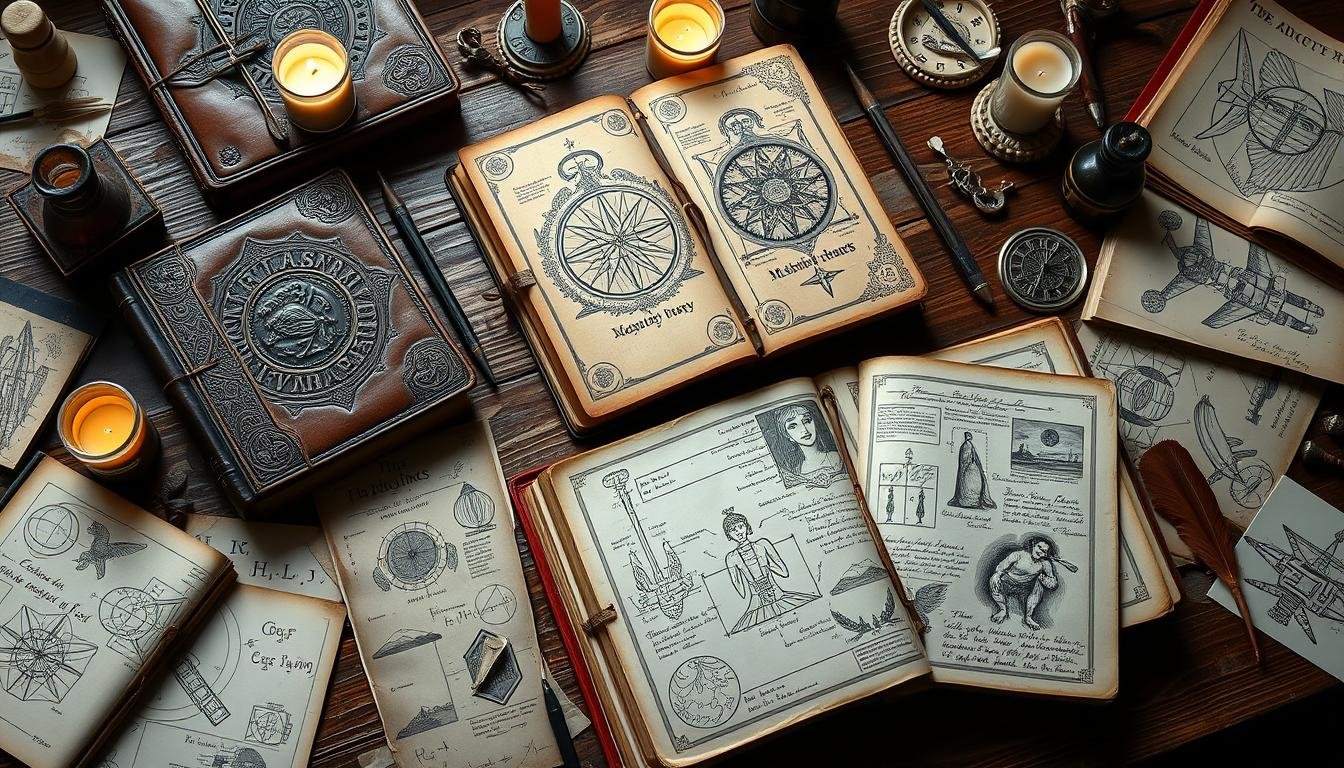How to Keep a Notebook Like Da Vinci | Expert Tips
As I sit here, pen in hand, staring at a blank page, I feel a connection to Leonardo da Vinci. He loved the power of words and the endless possibilities of a notebook. Da Vinci, the Renaissance master, left us with more than just his famous art. He filled thousands of pages with notes, sketches, and ideas.
What made Da Vinci’s note-taking so special? Was it the huge amount he wrote, his wide range of interests, or his unique way of jotting down thoughts? As I learn from this visionary, I feel inspired to improve my own note-taking.
In this article, we’ll dive into the art of keeping a notebook like Da Vinci. We’ll discover the secrets behind his creativity and discoveries. We’ll look at the tools, materials, observation, and documentation techniques that can unlock your genius.
Understanding Da Vinci’s Legacy of Note-Taking
Leonardo da Vinci’s notebooks, or codices, have amazed many around the world. The Codex Arundel shows his work on architecture and mechanics. The Codex Atlanticus has his most famous notes and sketches.
Da Vinci’s note-taking was groundbreaking. He broke down complex ideas into simple parts. His journals were for learning and trying new things, from flying machines to the human body.
Da Vinci used “mirror writing” to write his thoughts. He wrote from right to left and in reverse. This kept his work safe and helped him focus.
“Leonardo’s notebooks were not a mere collection of observations, but a testament to his insatiable curiosity and his relentless pursuit of understanding the world around him.”
Da Vinci’s note-taking was creative and flexible. He divided his pages for notes and reflection. This made learning interactive and engaging.
Da Vinci’s observation notebooks, genius note-taking methods, and visual note-taking still inspire today. People want to follow his curiosity and creative way of learning.
How to Keep a Notebook Like Da Vinci
Leonardo Da Vinci was known for his endless curiosity and creativity. He was a master note-taker. By following his journaling methods, you can unleash your own creativity and see things in new ways. Learn the tools, ways to organize, and daily habits that made Da Vinci’s notebook habit so special.
Essential Tools and Materials
Start by picking the right tools for your notebook. Choose a small notebook that you can take with you. Use good pens, pencils, and markers to make your notes clear and colorful. Try different papers to find what works best for you.
Setting Up Your Notebook System
Create a note-taking system that fits you. You might like the Cornell Method, which has sections for main ideas and summaries. Or try mind mapping to connect ideas visually. Da Vinci mixed text and sketches, so feel free to do the same.
Daily Note-Taking Practices
Make journaling a daily habit, just like Da Vinci did. Set a time each day to write, draw, and think. Write down what you notice, wonder, and find interesting. Da Vinci even wrote in mirror script to keep his notes private. Look back at your entries often and feel free to change or add to them.

By adopting Da Vinci’s journaling habits, you can gain a deeper understanding of the world. You can also unlock your own creative potential. So, get your notebook ready, sharpen your pencils, and start your own journey of discovery, just like Da Vinci.
The Art of Observation and Documentation
Leonardo da Vinci was known for his sharp observation skills. He said, “As you go about town, constantly observe, note and consider circumstances and behavior of men as they talk and quarrel, or laugh, or come to blows.” This skill was key to his creative note-taking and insights from his observation notebooks.
Da Vinci’s notebooks show his many talents. He was an architect, musician, inventor, engineer, sculptor, and painter. Five of his notebooks are at the Victoria and Albert Museum, giving us a peek into his creative process.
Da Vinci started using notebooks in the mid-1480s. His notebooks have detailed diagrams and notes in 16th-century Italian mirror writing. They cover topics like math, engineering, and anatomy.
| Notebook | Focus |
|---|---|
| Codex Forster I.1 | Solid bodies and volume measurements |
| Codex Forster II.1 | Theory of proportions, mentioning colleague Luca Paccioli |
| Codex Forster III | Sketches of a horse’s legs, drawings of clothing, and dissection drawings |
Da Vinci’s observation notebooks give us a look into his creative process. He observed the world and recorded his findings. This helped him come up with innovative ideas that still inspire us today.
In today’s world, creative note-taking and observation notebooks are valuable. They help us solve problems, gain insights, and spark creativity. By learning from da Vinci, we can understand the world better and tap into our own creativity.
Creating Visual Notes and Sketches
Learn from Leonardo da Vinci’s notebooks. He mixed sketching with notes. This way, you can understand and remember better. Start with simple shapes, icons, and diagrams for key ideas.
Combining Text with Illustrations
Don’t just write. Add pictures, diagrams, and symbols to your notes. This makes your learning more fun and complete. It helps you see how ideas connect, boosting your creativity.
Using Space Effectively
Use every bit of your page, like da Vinci did. He filled his notebooks with sketches and notes because paper was rare. Doing this makes your notebooks more useful and sparks your creativity.







